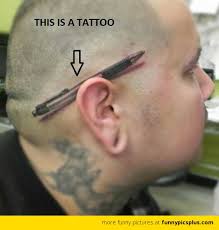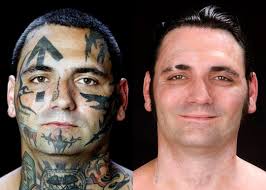Tattoo removal facts you need to know!
Getting a tattoo has become a milestone or rite-of-passage for many, and some people view tattooing as a way of defining themselves, their emotions or beliefs. Whatever your reason for getting a tattoo, always remember to go to a reputable tattoo parlour, ensure they take all the necessary sanitary precautions and that you know what you are getting into.
These are just a few of the examples of regrettable tattoos; hilarious Chinese words, poor drawn art and questionable humour.
What You Need To Know About Laser Tattoo Removal:
- About 1 in 3 people eventually regret getting their tattoos.
Whether a tattoo was a result of a drunken dare or as a method of emotional catharsis, most people tend to later regret them as they move on in life. An ill-planned tattoo could be a painful reminder of a misspent youth, or an embarrassing feature that you have to hide at work or in public. A poorly conceived tattoo could be expensive, painful and unsightly, and tattoo removal is not exactly cheap or pain-free, and in many cases, may not be able to be completely removed.
- Tattoo Removal Creams and Ointments Do Not Work
Tattoos are embedded in the deeper layers of the skin in order to make them permanent, so tattoo removal creams and ointments cannot reach them in order to effect their removal. The only way a cream can remove a tattoo is if it damages the skin above them as well. Any chemical treatment that claims to treat tattoos can only do so by injuring the skin and potentially causing dangerous side effects. Laser tattoo removal is the best known method to erase unwanted tattoos.
- How Laser Tattoo Removal Works
Prior to laser tattoo removal procedures coming into use in the 1980s, the only options for tattoo removal was by one of three methods, ie. dermabrasion – where skin was ‘sanded’ to remove top layers of skin; excision – where skin is removed by scalpel, sometimes necessitating a skin graft; or by freezing the area then excising it.
Laser tattoo removal offered a targeted method of removing tattoos that was a lot more comfortable and usually caused no more than erythema (skin redness) and transient swelling. The laser removal system also offers a bloodless, low-risk procedure done on an outpatient basis. The type of laser used in tattoo removal systems are called Q-switched lasers, which employ a short, high-energy pulse of laser that target the wavelengths of tattoo colors. The pigments in tattoo ink absorb the energy pulses, causing them to fragment into small particles that can then be disposed of through the body’s waste systems. At the proper energy setting, the laser does not harm the surrounding skin structures, although the heat from the laser pulse can cause some discomfort.
Depending on various factors (see below) such as size and color of the tattoo, it can take multiple sessions and often up to a year (with sessions 3-4 weeks apart) to completely remove a tattoo, although many tattoos cannot be fully erased, only lightened.
- Factors that affect laser tattoo removal results
Although laser tattoo removal science is improving rapidly, effectiveness of a tattoo removal procedure depends greatly on a number of factors including:
- the size of the tattoo – if the tattoo is very large, it may have to be treated in stages to prevent too much energy being absorbed by the skin in one session.
- the colour of the tattoo – each tattoo color has to be targeted at a specific color wavelength, with darker colors being easiest to remove.
- the location of the tattoo – if the tattoo is located in an especially sensitive area, energy levels may have to be reduced to prevent burns or due to discomfort. Lower energy levels mean less of the tattoo ink can be destroyed per session.
- the colour of the individual’s skin – the darker the skin of the patient, the less the laser pulse energy that can be applied; the greater amounts of laser energy that darker skin tones absorb can cause skin damage.
- the individual’s ability to heal – some patients heal slower from the treatment and this would affect the protocol and timing of the subsequent procedures.
- the tattoo application method – the method of application of a tattoo can affect its placement within the skin, which in turn affects how well the ink absorbs the laser energy.
- the type of ink used – the types of inks used in tattoos vary greatly, and not all are able to absorb tattoo removal lasers easily. Some newer inks are specially designed to be easily targeted by the lasers.
- the skill of the tattoo artist – a more experienced tattoo artist would be able to inject the tattoo ink at roughly the same depth in the skin, thus the laser would be able to be calibrated to target most of it at once
- how old the tattoo is – the older the tattoo, the more ingrained it becomes in the skin, and as a result, older tattoos are very difficult to be removed.
Bryon Widner was a reformed Nazi supremacist desperate to put his past behind him. His tattoos were inciting fear and hate in the people around him, and he no longer wanted to be identified with the racism and violence of his youth. After 25 tattoo removal sessions, Widner is a new man.




